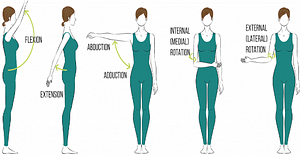Medical Fitness
Range of Motion Limitations Following Breast Surgery
Range of Motion Limitations Following Breast Surgery
Adapted from the: Free Mini Course: Essentials of Cancer Exercise
Following breast surgery/reconstruction, shoulder range of motion limitations (ROM) are not uncommon. This may also be the case with some head and neck cancer surgeries. It’s important to address these issues because they can lead to additional joint deterioration, and/or frozen shoulder, if not corrected.  Conducting a ROM assessment with a goniometer will help determine which areas need attention. Before beginning a resistance training program, your client should have 90% or better of the lower end of the ROM norm. Remember that ROM measurements taken passively are typically a reflection of flexibility while measurements taken actively are typically a reflection of strength. This process is described in detail and norms for each plane of motion are listed in the shoulder ROM section in the Mini Course.
Conducting a ROM assessment with a goniometer will help determine which areas need attention. Before beginning a resistance training program, your client should have 90% or better of the lower end of the ROM norm. Remember that ROM measurements taken passively are typically a reflection of flexibility while measurements taken actively are typically a reflection of strength. This process is described in detail and norms for each plane of motion are listed in the shoulder ROM section in the Mini Course.

Contraindications:
- Only have your client stretch to the point of mild discomfort – NO PAIN!
- If your client has expanders (breast reconstruction) NO CHEST STRETCHES AT ALL!
- If your client has severely impaired ROM, recommend that they see a physical therapist or occupational therapist to focus on that particular ROM issue.
- Have client focus on stretches in the plane of motion that they are limited in. Make sure they stay in that plane throughout the movement. For example, if your client is working on shoulder flexion, make sure that their arm does not abduct during the movement.
- If they have less than 90% of the norm in any plane of motion, DO NOT begin strength training in that plane of motion.
Note: Following any surgery it is mandatory that you have a medical clearance from the doctor prior to your first meeting with your client if it involves anything physical (this includes assessment protocol).
For More Information on Specializing in Cancer Exercise or to Enroll in the Free Mini Course, click Here

